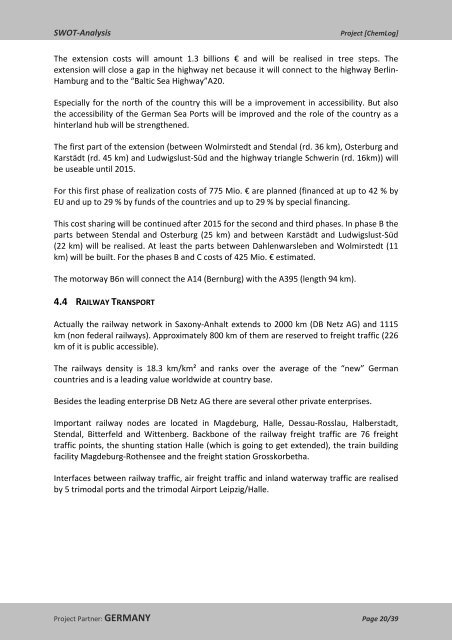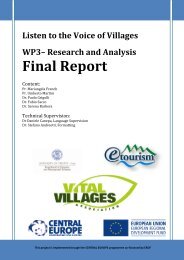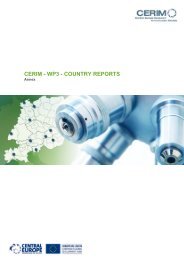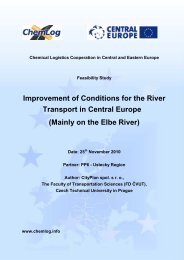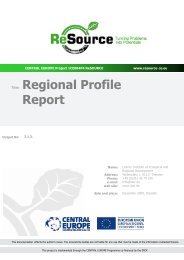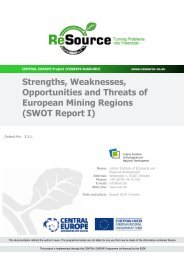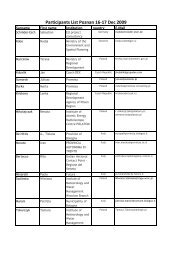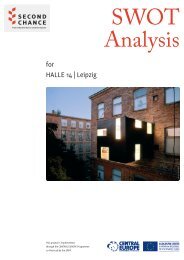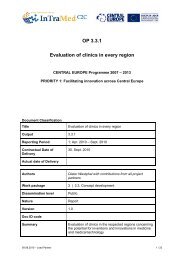SWOT‐Analysis Chemical Logistics: Germany - Central Europe
SWOT‐Analysis Chemical Logistics: Germany - Central Europe
SWOT‐Analysis Chemical Logistics: Germany - Central Europe
Create successful ePaper yourself
Turn your PDF publications into a flip-book with our unique Google optimized e-Paper software.
<strong>SWOT‐Analysis</strong> Project [ChemLog]<br />
The extension costs will amount 1.3 billions € and will be realised in tree steps. The<br />
extension will close a gap in the highway net because it will connect to the highway Berlin‐<br />
Hamburg and to the “Baltic Sea Highway”A20.<br />
Especially for the north of the country this will be a improvement in accessibility. But also<br />
the accessibility of the German Sea Ports will be improved and the role of the country as a<br />
hinterland hub will be strengthened.<br />
The first part of the extension (between Wolmirstedt and Stendal (rd. 36 km), Osterburg and<br />
Karstädt (rd. 45 km) and Ludwigslust‐Süd and the highway triangle Schwerin (rd. 16km)) will<br />
be useable until 2015.<br />
For this first phase of realization costs of 775 Mio. € are planned (financed at up to 42 % by<br />
EU and up to 29 % by funds of the countries and up to 29 % by special financing.<br />
This cost sharing will be continued after 2015 for the second and third phases. In phase B the<br />
parts between Stendal and Osterburg (25 km) and between Karstädt and Ludwigslust‐Süd<br />
(22 km) will be realised. At least the parts between Dahlenwarsleben and Wolmirstedt (11<br />
km) will be built. For the phases B and C costs of 425 Mio. € estimated.<br />
The motorway B6n will connect the A14 (Bernburg) with the A395 (length 94 km).<br />
4.4 RAILWAY TRANSPORT<br />
Actually the railway network in Saxony‐Anhalt extends to 2000 km (DB Netz AG) and 1115<br />
km (non federal railways). Approximately 800 km of them are reserved to freight traffic (226<br />
km of it is public accessible).<br />
The railways density is 18.3 km/km² and ranks over the average of the “new” German<br />
countries and is a leading value worldwide at country base.<br />
Besides the leading enterprise DB Netz AG there are several other private enterprises.<br />
Important railway nodes are located in Magdeburg, Halle, Dessau‐Rosslau, Halberstadt,<br />
Stendal, Bitterfeld and Wittenberg. Backbone of the railway freight traffic are 76 freight<br />
traffic points, the shunting station Halle (which is going to get extended), the train building<br />
facility Magdeburg‐Rothensee and the freight station Grosskorbetha.<br />
Interfaces between railway traffic, air freight traffic and inland waterway traffic are realised<br />
by 5 trimodal ports and the trimodal Airport Leipzig/Halle.<br />
Project Partner: GERMANY Page 20/39


